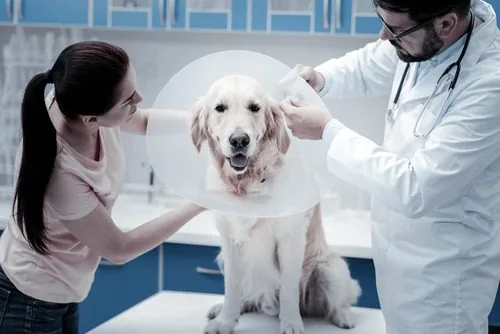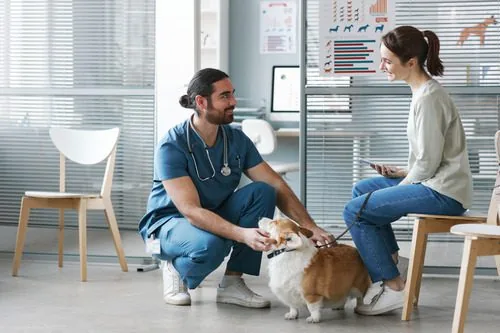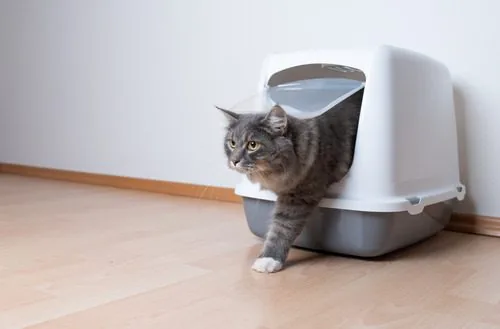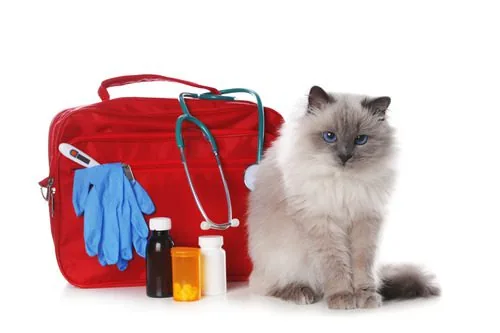Spondylosis in Dogs: Symptoms, Treatment, & More
If your dog is slowing down or showing signs of stiffness in their back or neck, it could be more than just old age. One possible explanation is spondylosis in dogs, a condition that affects the spine and can impact a dog’s mobility, posture, and comfort. This blog explores what spondylosis is, how it develops, and the steps you and your veterinarian can take to manage it effectively. If your dog has been diagnosed with spondylosis or you’ve noticed recent changes in their movement, call Veterinary Healthcare Associates in Winter Haven, FL at (863) 324-3340 to schedule an evaluation. Let’s look closer at the signs, causes, and treatment options for this condition.
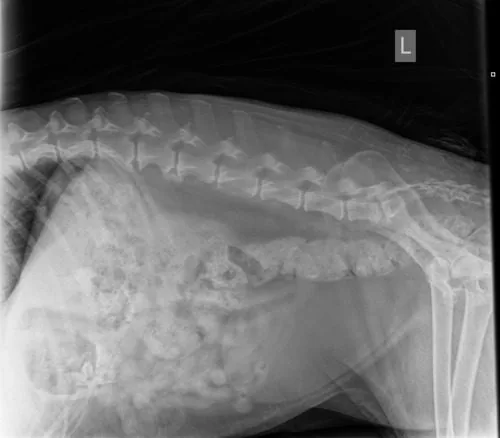
What Is Canine Spondylosis?
Spondylosis in dogs is a degenerative condition that affects the spine. Over time, bony growths called osteophytes, or bone spurs, form along the edges of the vertebrae. These growths develop in response to chronic stress, aging, or spinal instability. Spondylosis is typically seen in senior dogs and large breeds, although any dog can develop it. While the condition is often associated with aging, it doesn’t always cause pain. Many dogs with spondylosis show no clinical signs, and the changes are only found on X-rays taken for unrelated reasons.
Why These Bony Growths Form
The development of bone spurs is the body’s attempt to stabilize the spine. As the spine ages or experiences ongoing stress, the vertebral joints lose flexibility. The body compensates by growing new bone to create more structural support. In some cases, the spurs bridge the gap between vertebrae, creating a rigid and less flexible spinal column.
Common Symptoms of Spondylosis in Dogs
Many dogs with spondylosis don’t exhibit obvious signs. However, when symptoms are present, they often relate to decreased mobility or discomfort.
Signs to Watch For:
- Stiffness or reluctance to move: Especially after rest or first thing in the morning
- Back or neck pain: Sensitivity when touched along the spine
- Reduced flexibility: Difficulty turning the head or arching the back
- Gait changes: Hesitant walking, dragging the back feet, or short strides
- Muscle atrophy: Weakening of muscles due to decreased movement
- Increased fatigue: Less interest in play or exercise
These signs can be subtle at first, which is why regular checkups are important, especially for aging dogs or breeds prone to joint issues.
Causes and Risk Factors
Spondylosis in dogs is typically the result of normal wear and tear on the spine. While not preventable in all cases, certain factors can increase a dog’s risk.
Primary Causes:
- Aging: The most common contributor. As dogs age, spinal joints degenerate naturally.
- Genetics: Some breeds, especially larger ones like German Shepherds and Boxers, are more predisposed.
- Previous injuries: Past trauma or intervertebral disc disease can lead to spinal instability, triggering bony growths.
- Obesity: Extra weight increases the load on the spine and accelerates joint stress.
How Vets Diagnose Spondylosis in Dogs
Diagnosing spondylosis requires a physical exam and diagnostic imaging. Because symptoms can overlap with other conditions like arthritis, hip dysplasia, or disc disease, proper evaluation is key.
What to Expect During a Diagnostic Visit at VHA
- Physical Examination: Your vet will check for signs of discomfort, stiffness, or decreased range of motion along the spine.
- X-rays: These are the most reliable method to detect bone spurs and assess the extent of spinal changes.
- Advanced Imaging (if needed): MRI or CT scans may be recommended if neurological signs are present or if more detail is needed.
The appearance of osteophytes on X-rays doesn’t always correlate with pain. Some dogs may have extensive spinal changes but remain asymptomatic.
How Is Spondylosis in Dogs Addressed?
There is no cure for spondylosis in dogs, but treatment focuses on managing symptoms, maintaining mobility, and improving quality of life.
Non-Surgical Management
For most dogs, treatment is conservative and involves a multimodal approach:
Medication
- Anti-inflammatory drugs: These help reduce inflammation and ease discomfort.
- Pain relievers: Used short-term during flare-ups or long-term for ongoing support.
Physical Rehabilitation
- Therapeutic exercises: Strengthen core muscles and support the spine.
- Hydrotherapy: Allows low-impact movement in water, ideal for stiff or overweight dogs.
- Laser therapy or acupuncture: May help reduce inflammation and improve mobility.
Lifestyle Adjustments
- Weight management: Maintaining a healthy weight reduces pressure on the spine.
- Modified activity: Controlled exercise and avoiding high-impact activities can prevent further strain.
- Supportive bedding and ramps: These reduce the need for jumping and help your dog stay comfortable at home.
Surgical Intervention
In rare cases where spondylosis causes nerve compression or severe pain that doesn’t respond to medical management, surgery may be considered. This typically involves removing a bone spur or decompressing a pinched nerve. However, most cases can be managed effectively without surgery.
Living with Spondylosis: What to Expect Over Time
The outlook for dogs with spondylosis varies depending on the severity of the spinal changes and whether neurological signs are present. Many dogs continue to live active lives with proper care and monitoring.
Long-Term Management Tips
- Routine veterinary visits: Check in regularly to track mobility and adjust the care plan.
- Consistent exercise: Low-impact movement keeps muscles strong and joints flexible.
- Pain monitoring: Track your dog’s activity level and behavior for any changes that suggest increased discomfort.
Although spondylosis is progressive, the rate of degeneration varies. With attentive care and veterinary guidance, many dogs remain mobile and content for years.
Supporting Your Dog’s Comfort and Mobility
If your dog has been diagnosed with spondylosis or you’re concerned about their mobility, the team at Veterinary Healthcare Associates is here to help you and your pet navigate through this. Many pet owners successfully manage this condition with the right combination of veterinary care, at-home support, and ongoing observation. If you’re in the Winter Haven, FL area and need help assessing your dog’s spine health or creating a customized treatment plan, call us at (863) 324-3340. Early intervention and consistent care can make a significant difference in your dog’s long-term comfort.
Recent Posts
Laparoscopic Spay vs Traditional Spay: What’s Best for Your Dog?
Laparoscopic Spay vs Traditional Spay: What’s Best for Your Dog? When comparing a laparoscopic spay vs traditional…
Laparoscopic Spay: Everything You Need to Know
Laparoscopic Spay: Everything You Need to Know Laparoscopic spay, also called a “minimally invasive spay,” is an…
When is Dog Diarrhea an Emergency?
When is Dog Diarrhea an Emergency? Dog owners know all too well that occasional digestive upset isn’t…
Is Cat Constipation an Emergency?
Is Cat Constipation an Emergency? Cats are often private about their habits, especially when it comes to…
Feline Emergencies: Warning Signs Your Cat is Crying for Help
Feline Emergencies: Warning Signs Your Cat is Crying for Help Cats have a reputation for being independent,…
About Veterinary Healthcare Associates
Veterinary Healthcare Associates in Winter Haven, FL, was established over 30 years ago as Maxwell Animal Clinic by Dr. John Maxwell. Maxwell Animal Clinic was a one-doctor general practice offering preventive care, dentistry, and standard surgical services to the community. As the years passed, Maxwell Animal Clinic evolved into a thriving 10-doctor general, specialty referral, and emergency veterinary practice.

